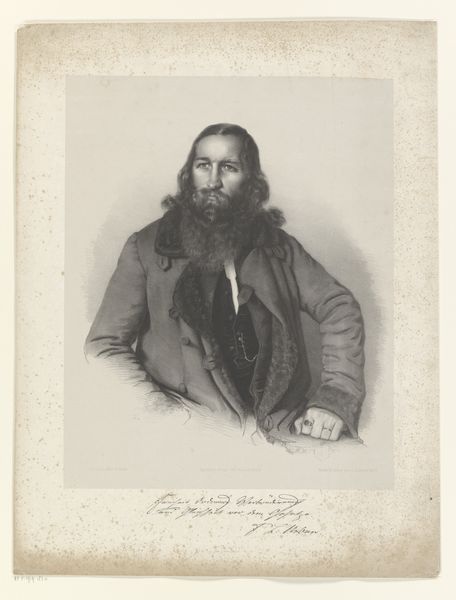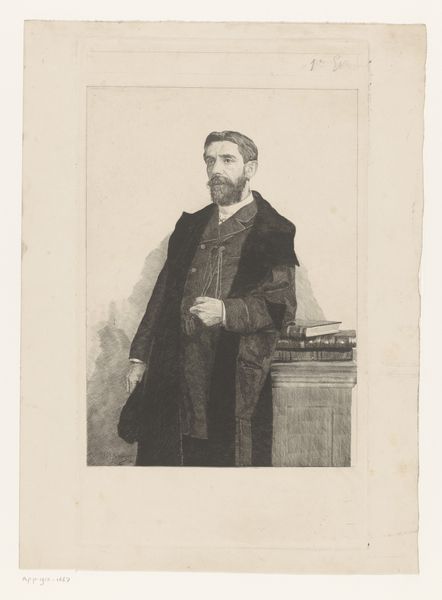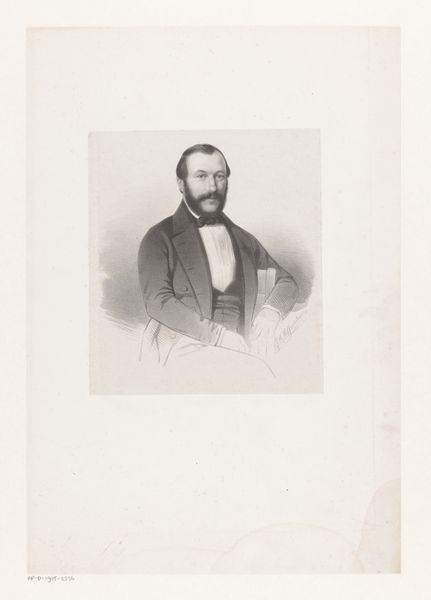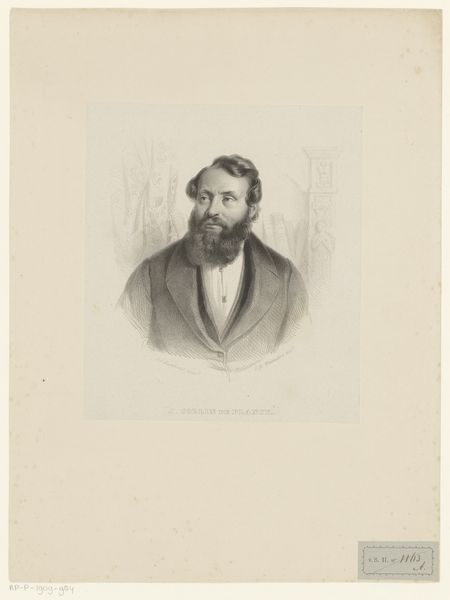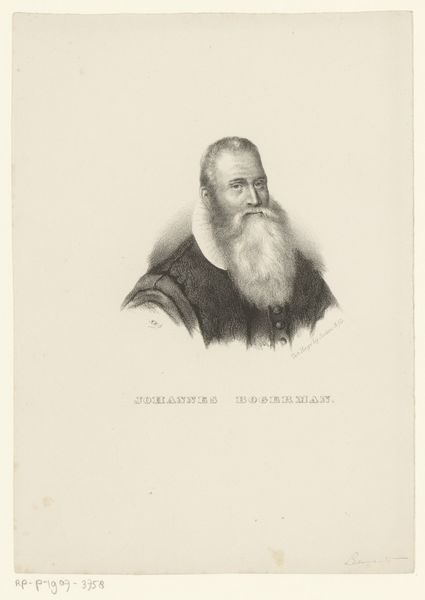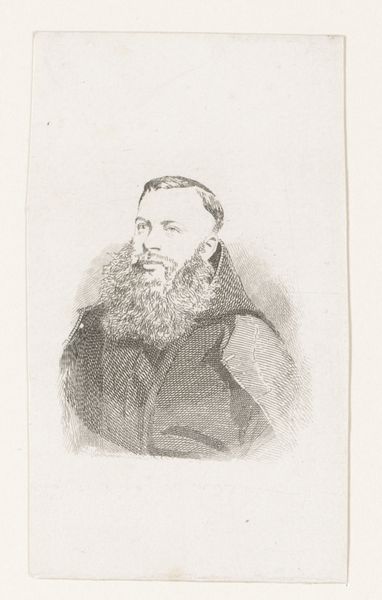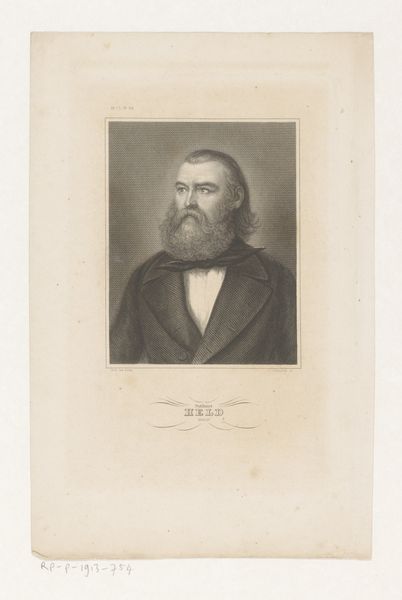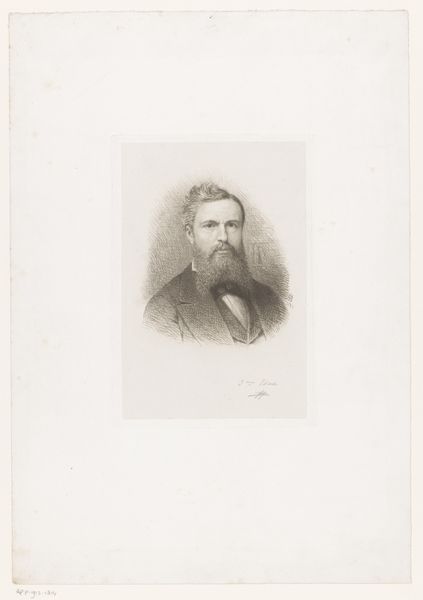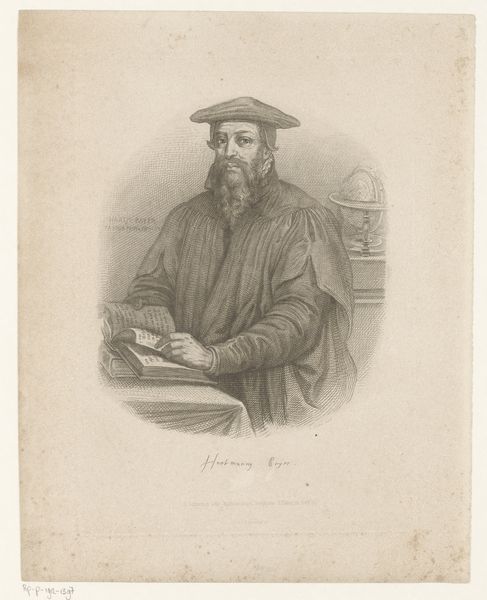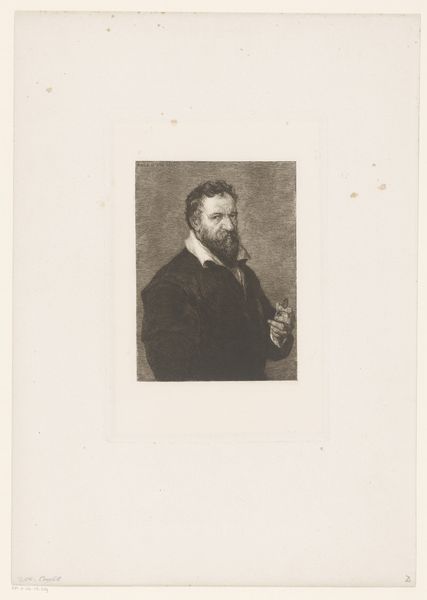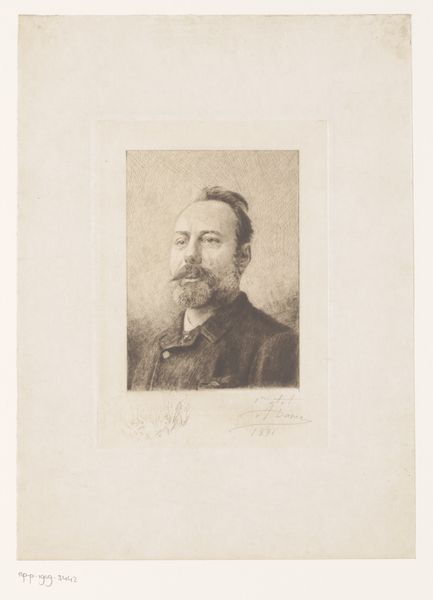
print, engraving
#
portrait
# print
#
charcoal drawing
#
engraving
#
realism
Dimensions: height 426 mm, width 318 mm
Copyright: Rijks Museum: Open Domain
Curator: This is Auguste Danse’s 1891 "Portret van Adolphe Englebienne," currently held here at the Rijksmuseum. The work is a print made using engraving, realism is apparent in the artwork. Editor: It evokes a sense of solemnity, doesn’t it? The subject's gaze is both intense and introspective, as if he's bearing the weight of the world on his shoulders. I find this mood extremely powerful. Curator: It is interesting you note that. Portraits like this during the period functioned as status symbols. Depicting civic leaders like Englebienne, showed the institutions that bolstered societal power, reflecting broader dynamics within Belgian society at the time. The ability to produce and disseminate imagery was itself a form of authority. Editor: Right, it isn't just a portrait, but a statement of power, of establishment. I keep thinking about the performative aspect here: Englebienne carefully posed to convey gravitas and intellect. How does that tie into his social role? Curator: Englebienne likely had specific ideas about how he wished to be perceived, engaging actively in the construction of his public image through portraiture. We should consider how prevalent political portraits in engravings and other mass-reproducible formats influenced public opinion and reinforced social hierarchies. Editor: That gives me pause. To what degree does his expression speak to anxieties, even if subtle ones, about his place in that societal framework? Could it be seen as a fragile claim to status, manifested visually? Curator: It pushes us to consider portraiture not only as documentation, but as part of an ongoing negotiation of social position, both for the sitter and, arguably, for the artist creating it. The material, engraving, helped facilitate this agenda. Editor: And these dialogues with our own biases. This encounter challenges simplistic readings of power and class, urging consideration of the vulnerable elements interwoven within grand public posturing. Thanks. Curator: Precisely. A vital point as we engage with historical representations, I will remember this.
Comments
No comments
Be the first to comment and join the conversation on the ultimate creative platform.

